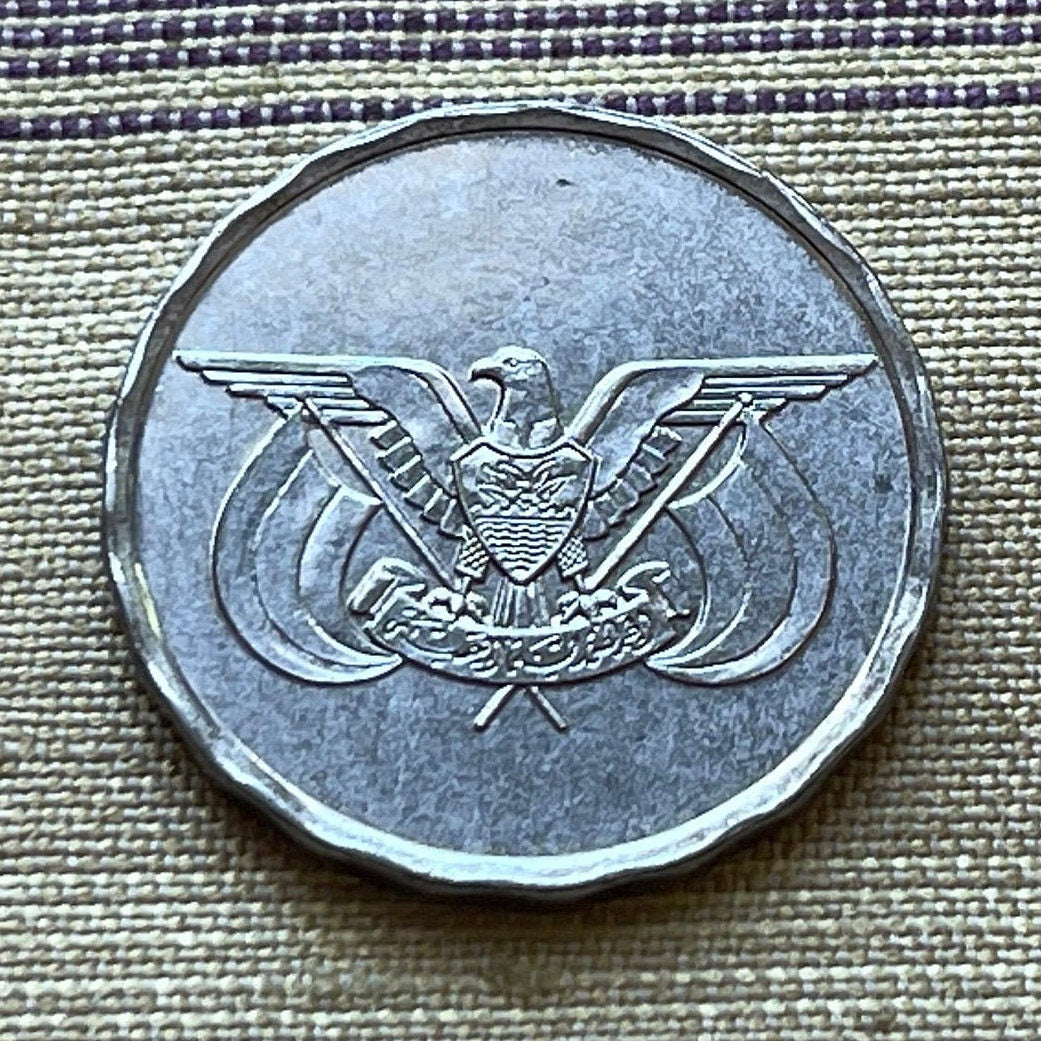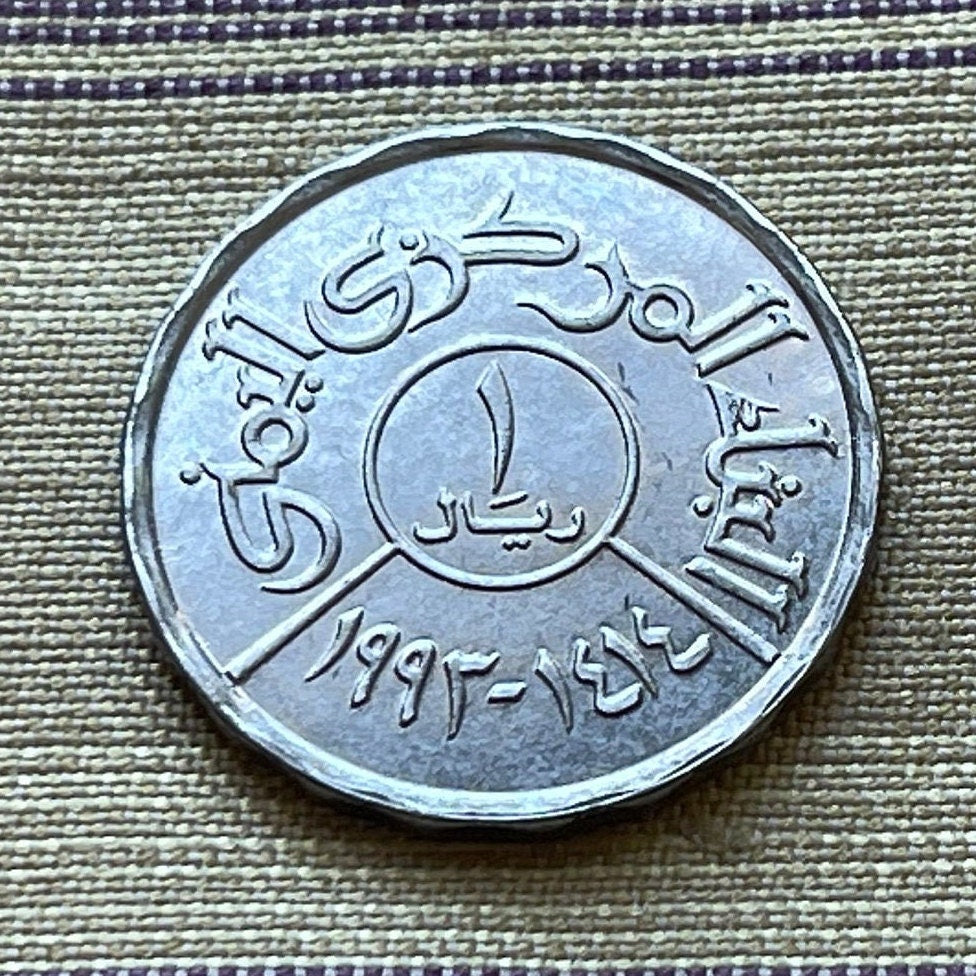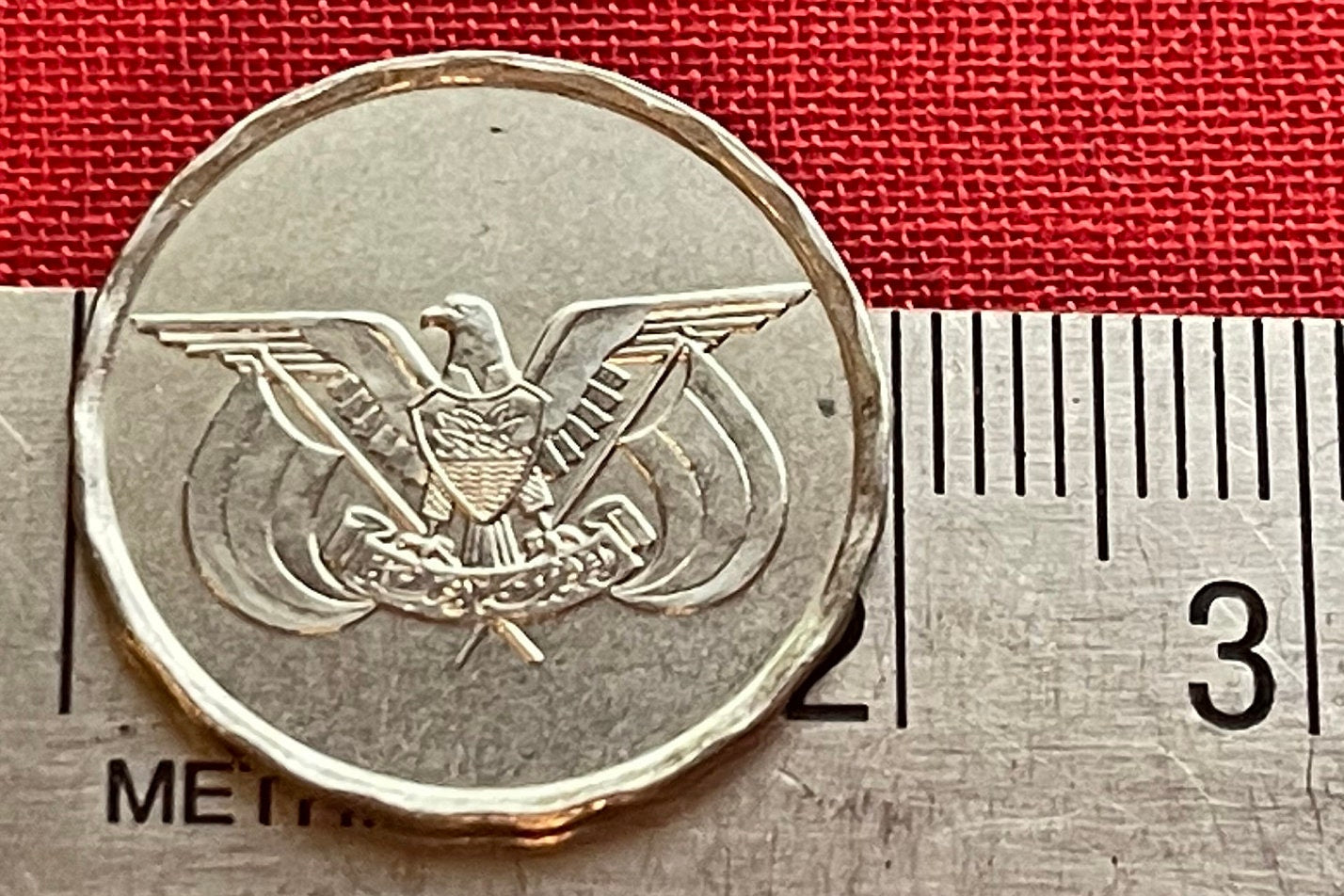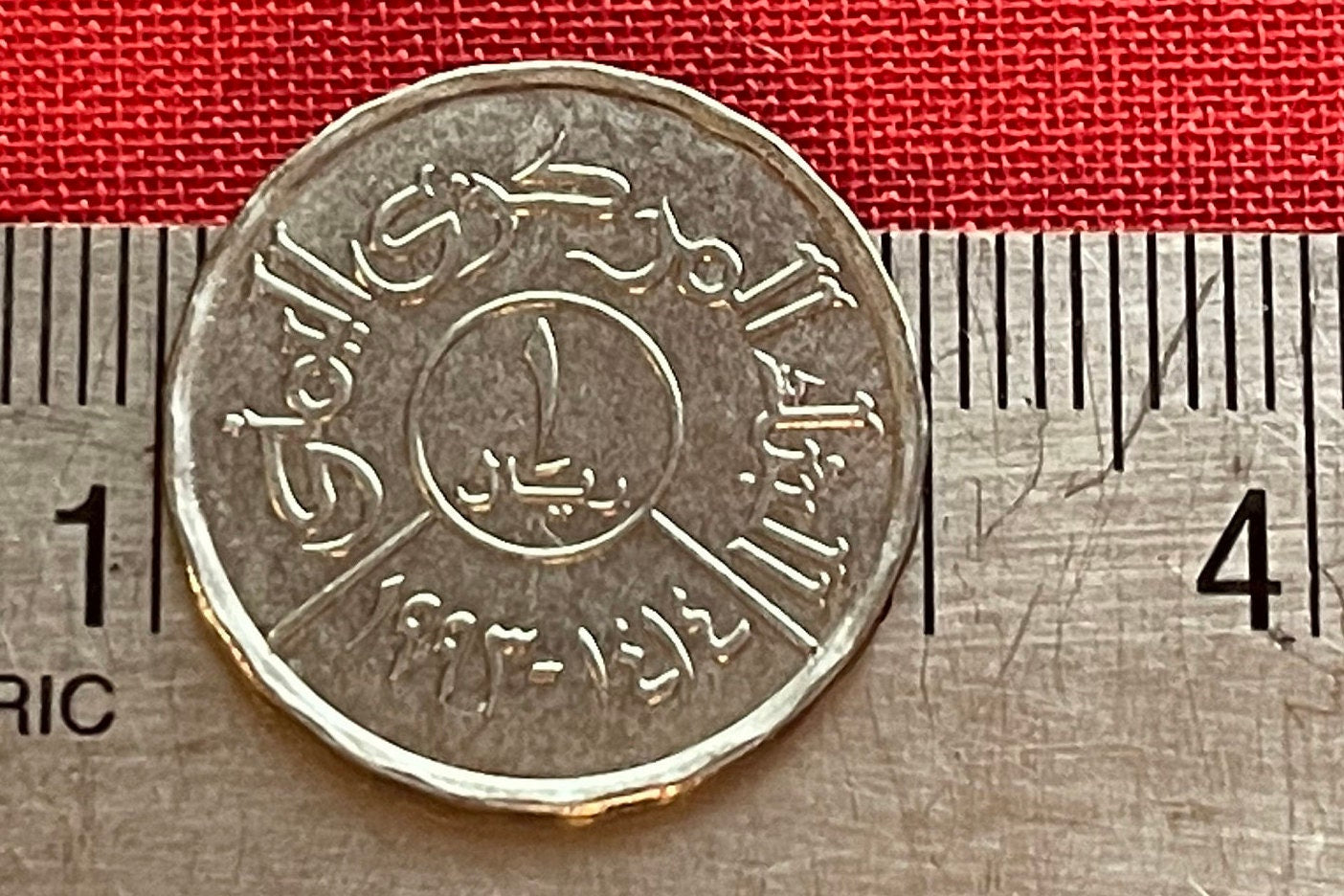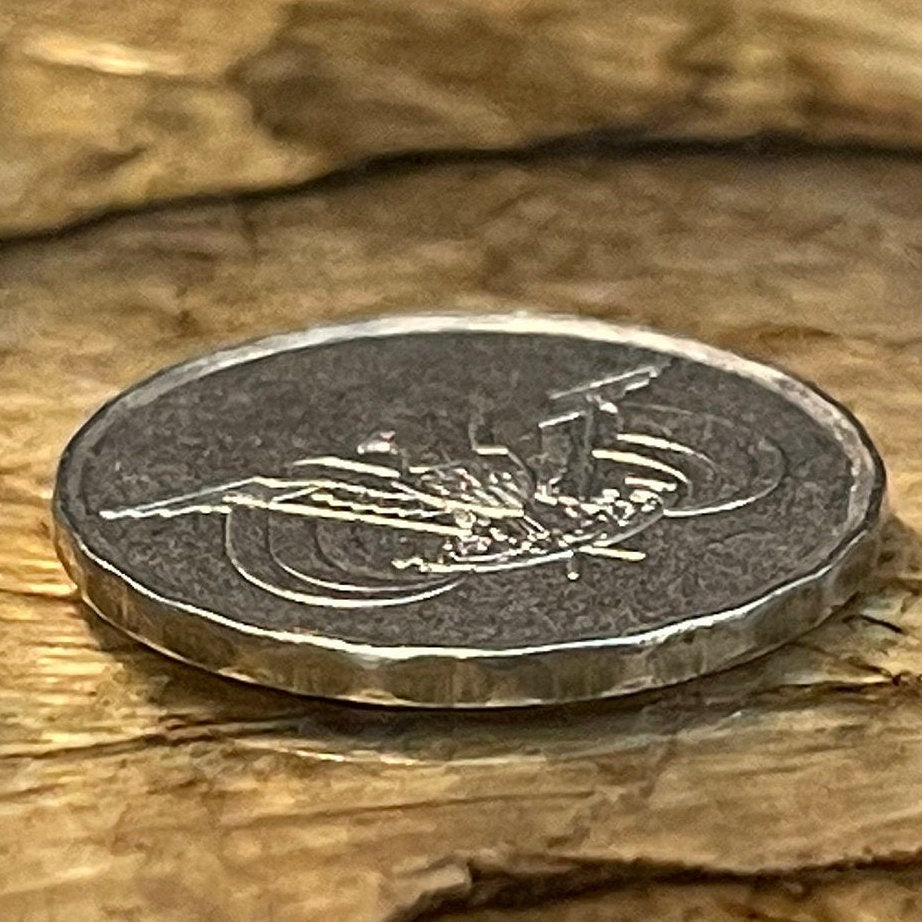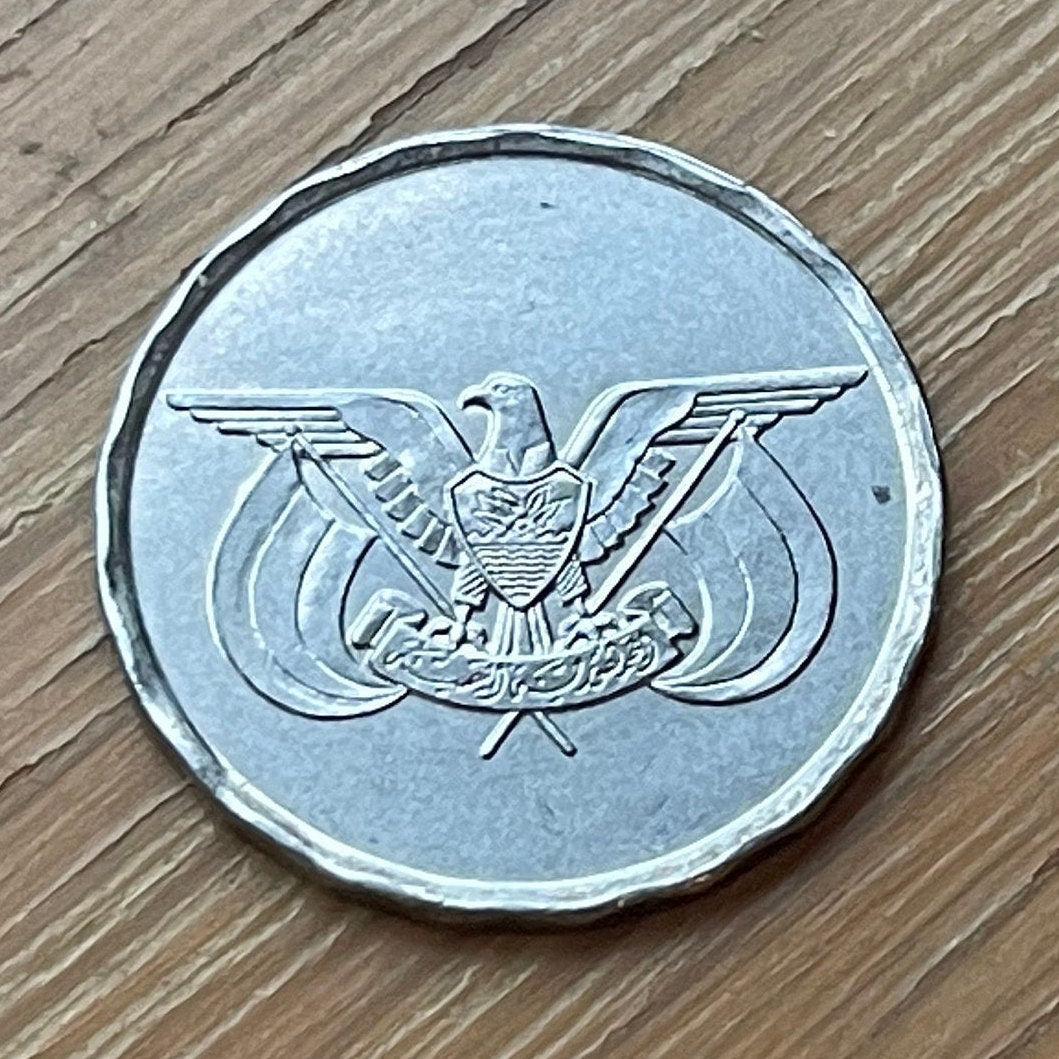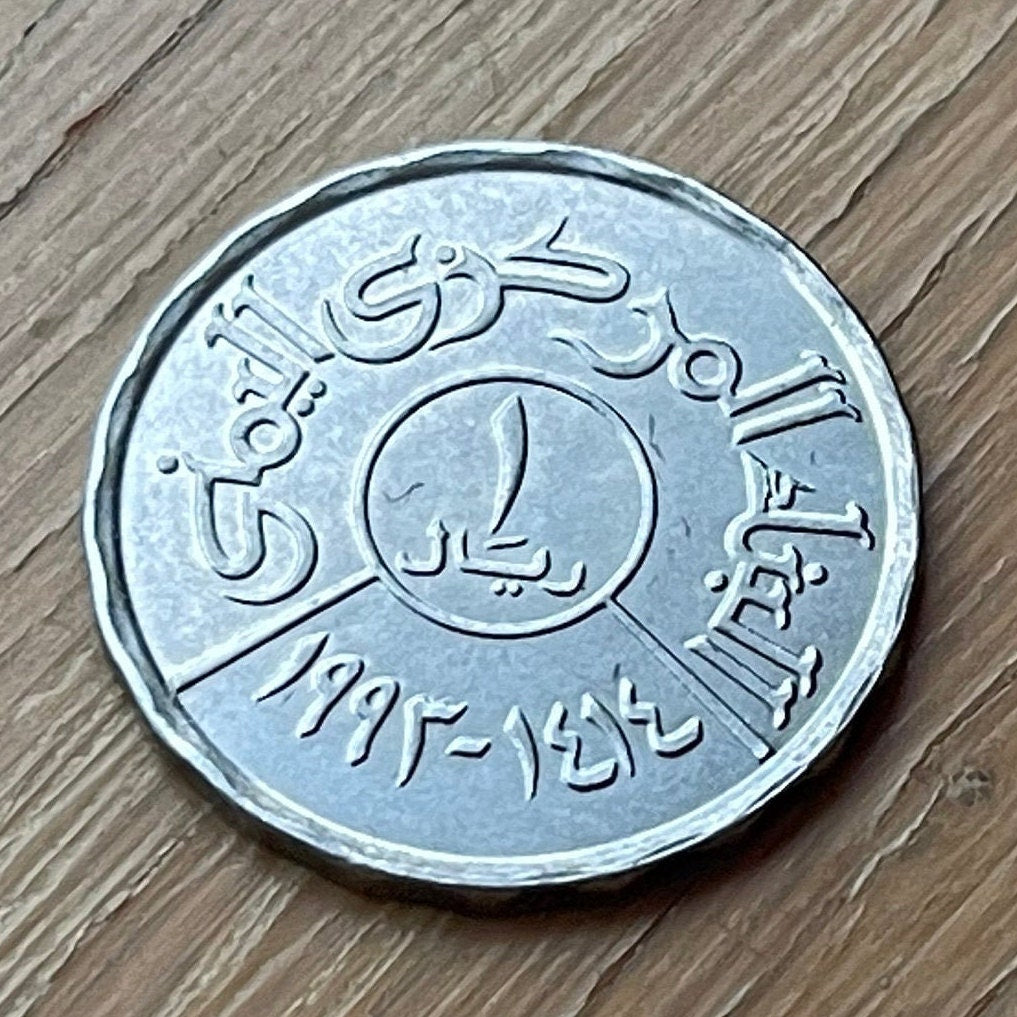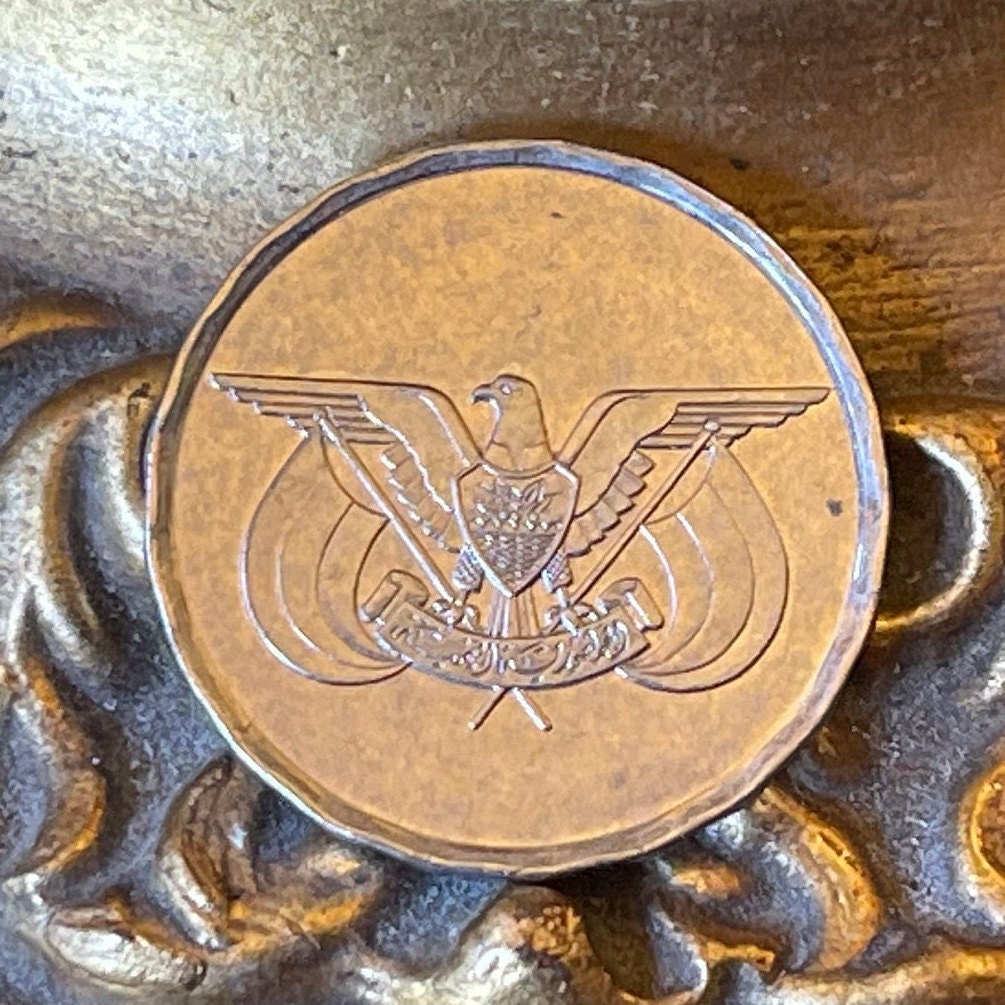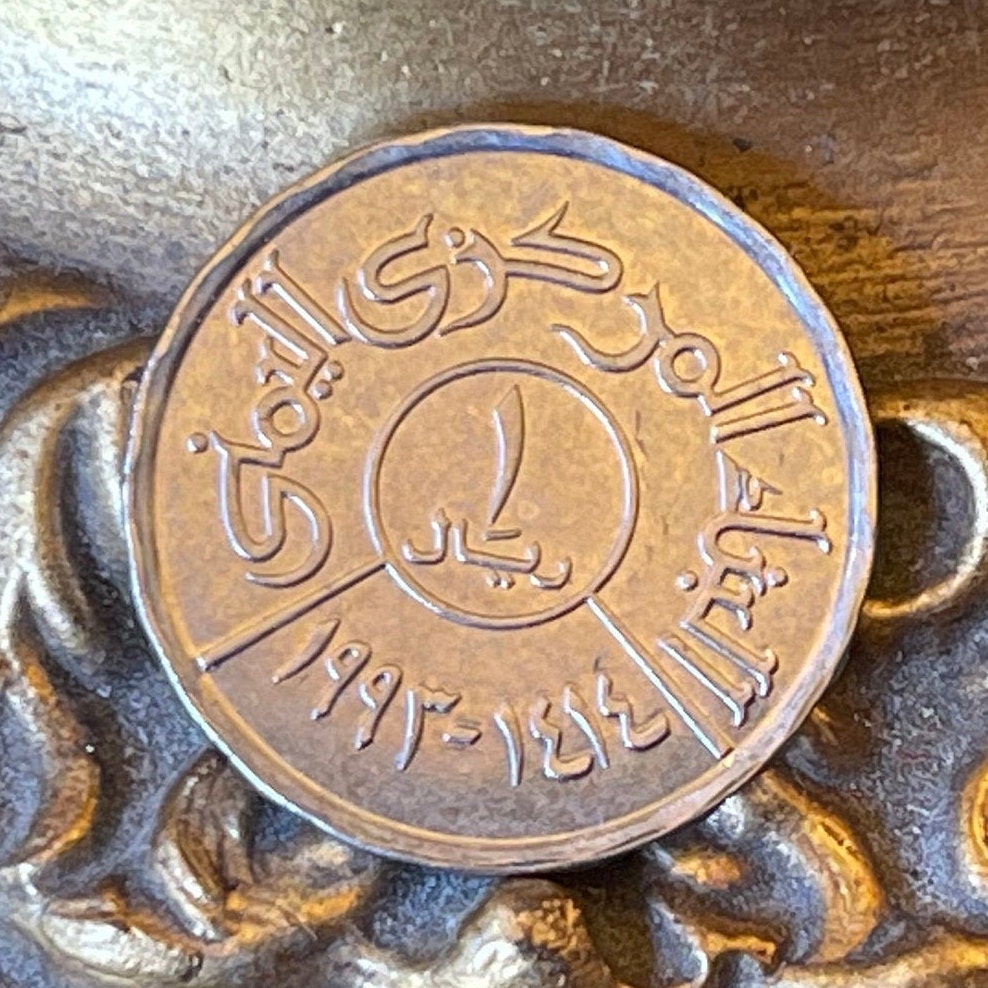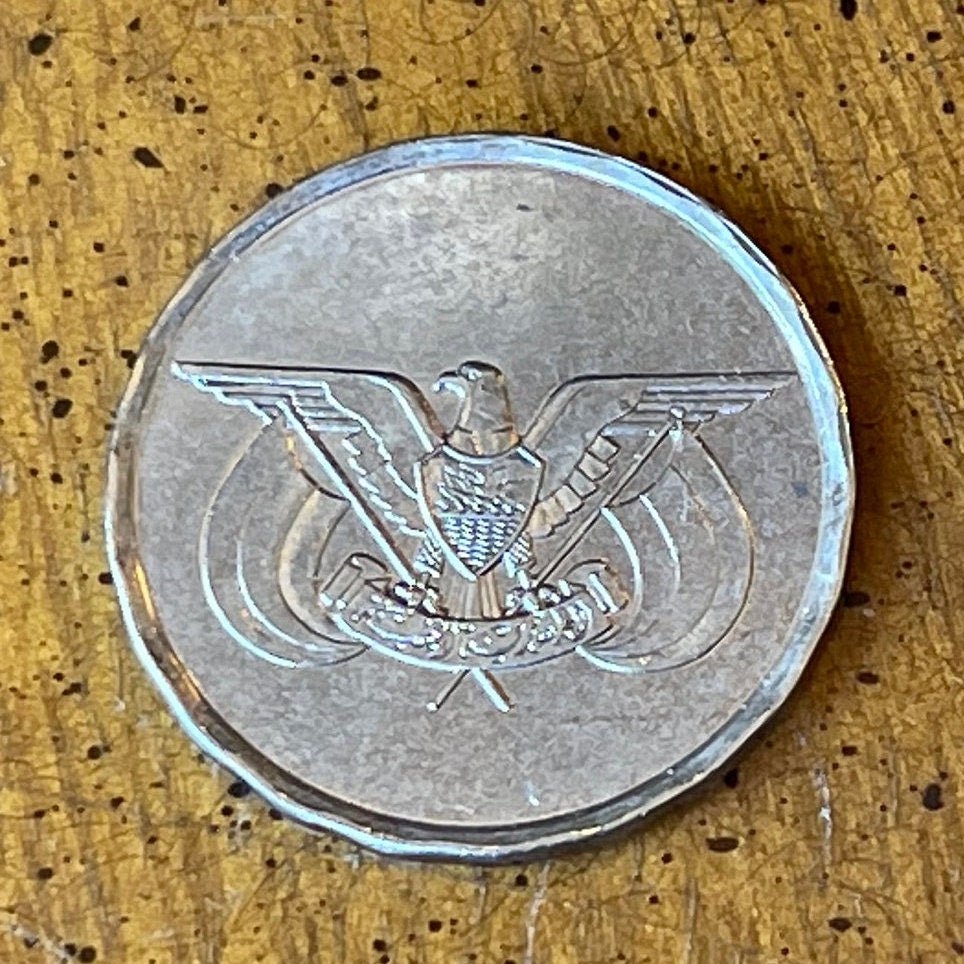elemintalshop
Eagle of Saladin 1 Rial Yemen Authentic Coin Money for Jewelry and Craft Making
Eagle of Saladin 1 Rial Yemen Authentic Coin Money for Jewelry and Craft Making
Couldn't load pickup availability
Eagle of Saladin 1 Rial Yemen Authentic Coin Money for Jewelry and Craft Making
Obverse: Denomination within circle and dates below
Lettering:
البنك المركزي اليمني
١
ريال
١٤١٤-١٩٩٣
Translation: Central Bank of Yemen
1 Rial
1414-1993
Reverse: National coat of arms with Eagle of Saladin center.
Edge
Multi-sided
Features
Issuer Yemen
Type Standard circulation coin
Year 1414 (1993)
Calendar Islamic (Hijri)
Value 1 Riyal
1 YER = 0.0040 USD
Currency Rial (1990-date)
Composition Stainless steel
Weight 2.65 g
Diameter 19.95 mm
Thickness 1.5 mm
Shape Icosihenagonal (21-sided)
Orientation Medal alignment ↑↑
Number N# 4830
References KM# 25, Schön# 162
Wikipedia:
The national emblem of Yemen depicts a golden eagle with a scroll between its claws. On the scroll is written the name of the country in Arabic: الجمهورية اليمنية or Al-Jumhuriyyah Al-Yamaniyah ("The Yemeni Republic"). The chest of the eagle contains a shield that depicts a coffee plant and the Marib Dam, with seven blue wavy stripes below. The flagstaffs on the right and left of the eagle hold the Flag of Yemen.
Wikipedia:
The Eagle of Saladin (Arabic: عقاب صلاح الدين), known in Egypt as the Egyptian Eagle (Arabic: العقاب المصري al-ʿuʾạb al-missry), and the Republican Eagle (العقاب الجمهوري el-ʿuʾạb el-goumhūri), is a heraldic eagle that serves as the national symbol and coat of arms of Egypt, Iraq, Palestine, and of the Southern Transitional Council of South Yemen. Since the Egyptian Revolution of 1952, the eagle has been an iconic symbol of Egypt, and of Arab nationalism, particularly in Arab states that underwent anti-imperialist political change from the 1950s onwards. It was formerly the national symbol of the now defunct United Arab Republic, North Yemen, South Yemen, and the Libyan Arab Republic.
Origin of the eagle
Inspired by the ancient eagle depicted on Egyptians temples from the Pharaonic era, Saladin, the first Sultan of Egypt, took the animal as a symbol of strength, and carried a yellow flag emblazoned with an eagle as his personal standard. The Cairo Citadel, built during Saladin's reign, has a large eagle on its west wall believed to depict Saladin's emblem. Speculated by the Ottoman explorer Evliya Çelebi to have originally been double-headed, the eagle on the Citadel wall is today headless. The course lines on the eagle do not correspond with those on the wall, suggesting that it was moved to its present location substantially after Saladin's rule, possibly during the rule of Muhammad Ali, when the upper part of the wall was rebuilt. The double-headed eagle symbol was also used on coins of Al-Adil I, Saladin's brother who succeeded him as Sultan.
Modern history
The first state emblem to use the Eagle of Saladin was the Egyptian coat of arms adopted during the 1952 revolution
The Egyptian Revolution of 1952 was characterised by a profound reassertion of both Egyptian nationalism, and Arab nationalism, the latter particularly in the context of the Arab-Israeli conflict. Drawing direct parallels between this conflict and the Crusades, the leaders of Egypt's revolution connected their own declared efforts of Arab liberation with those of the medieval Saladin who, as Egypt's Sultan, had united Arab forces against the Crusaders in Palestine. Simultaneously, Egypt's revolutionary government under Muhammad Naguib and Gamal Abdel Nasser, both veterans of the Palestine War, introduced the Arab Liberation Flag bearing the colours of red, white, black, and green associated with the Rashidun Caliphate of Medina, the Umayyad Caliphate of Damascus, the Abbasid Caliphate of Baghdad, and Egypt's own Fatimad Caliphate of Cairo. In the centre of the flag they placed the Eagle of Saladin, rendered in gold. Henceforth, both the Eagle of Saladin, and the Arab Liberation Flag would become symbols linked extricably with revolutionary republican Egypt, and the wider cause of Arab nationalism.
When Egypt united with Syria in 1958 to form the United Arab Republic, the Eagle of Saladin became the new state's coat of arms, whilst the Arab Liberation Flag was taken as the basis for the flag.
Even though the Egyptian-Syrian Union ended abruptly in 1961 after a coup d'etat in Syria, the Eagle remained a potent symbol for those aspiring for Arab unity. Following the toppling of the monarchy of North Yemen in 1962, the Eagle became the national symbol of the new Yemen Arab Republic, and later of the People's Democratic Republic of Yemen in South Yemen in 1967. Likewise, Iraq's 1963 Ramadan Revolution by the Arab Socialist Ba'ath Party led to Iraq also adopting the Eagle as Iraq's coat of arms of Iraq. Conversely, the Libyan Arab Republic adopted the Eagle in 1969, however, it was later supplanted by the Hawk of Quraish when, along with Egypt, and Syria, Libya established the Federation of Arab Republics in 1972.
The State of Palestine was the most recent state to adopt the Eagle of Saladin, doing so upon its declaration of statehood in 1988.
Share
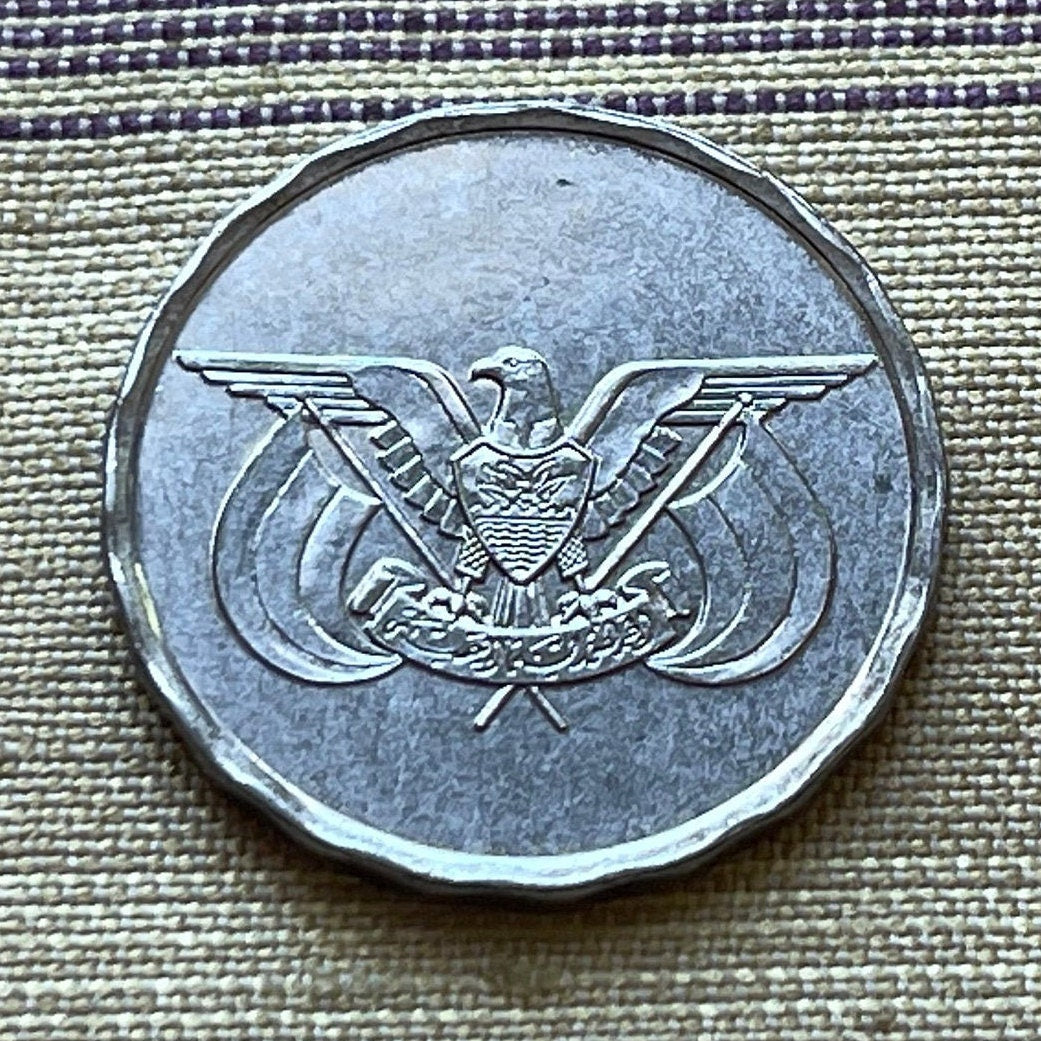
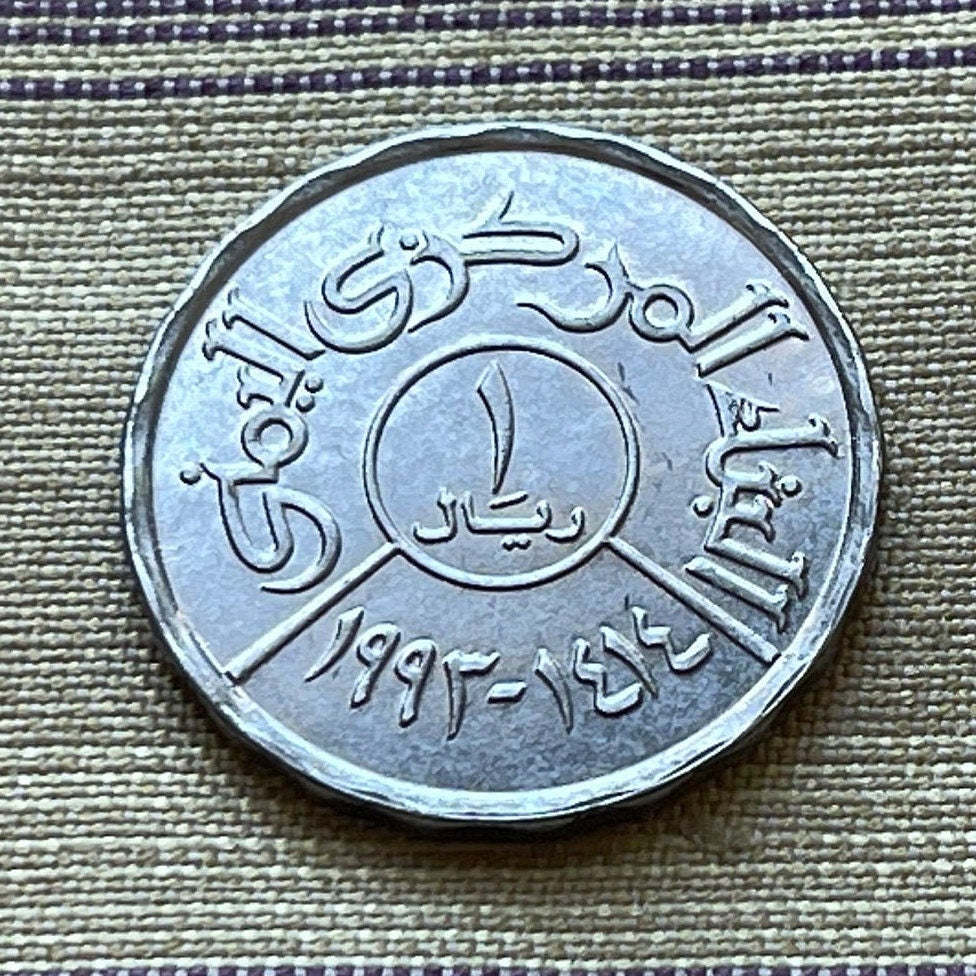
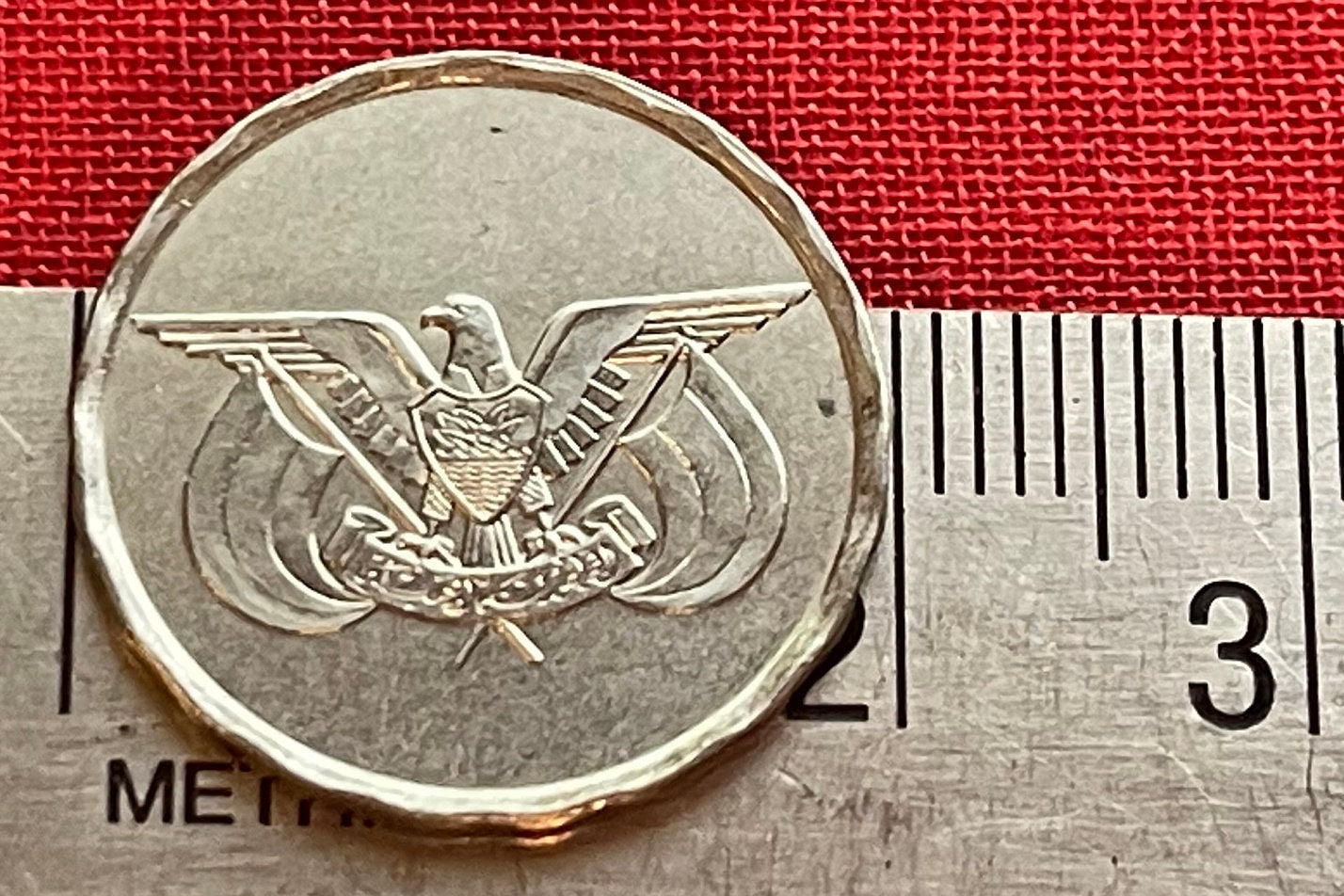
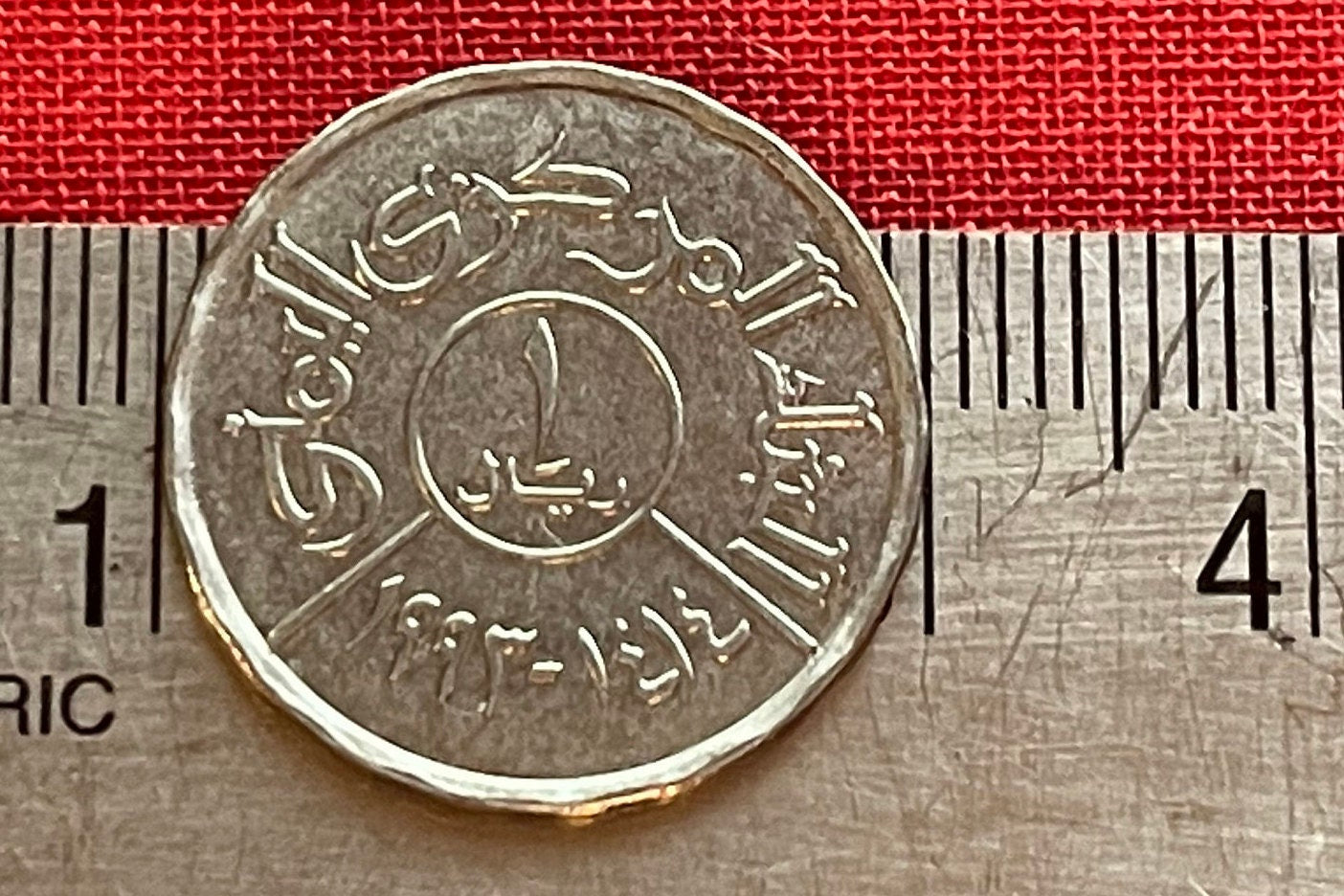
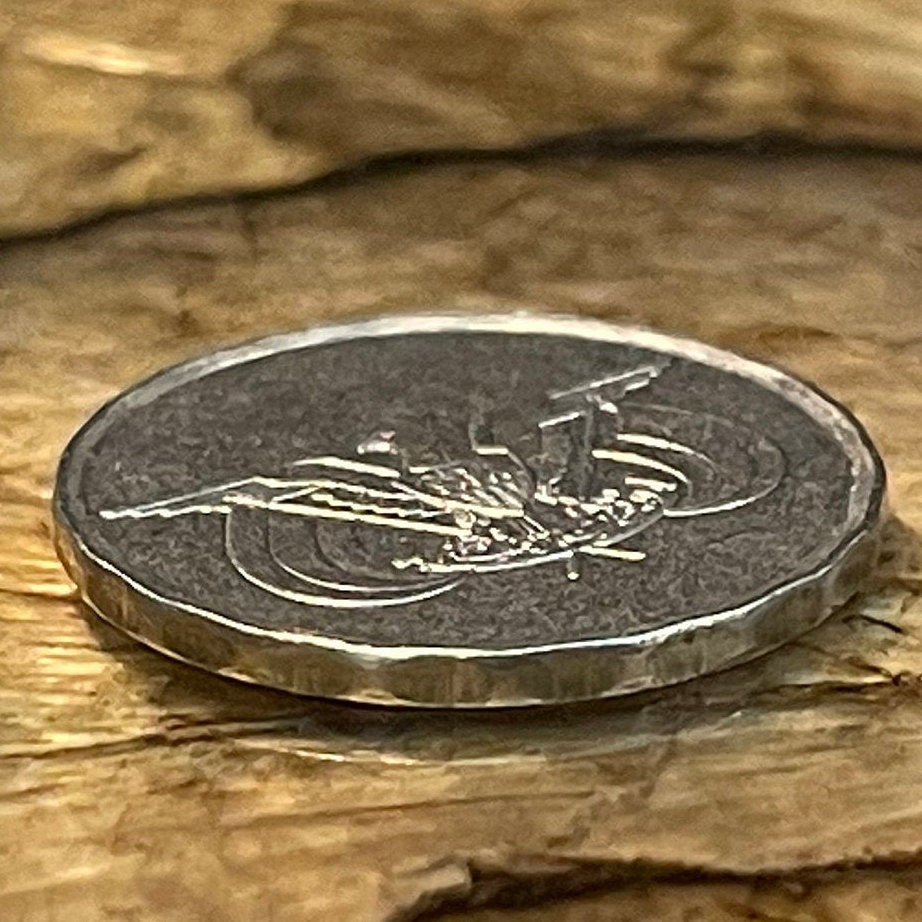
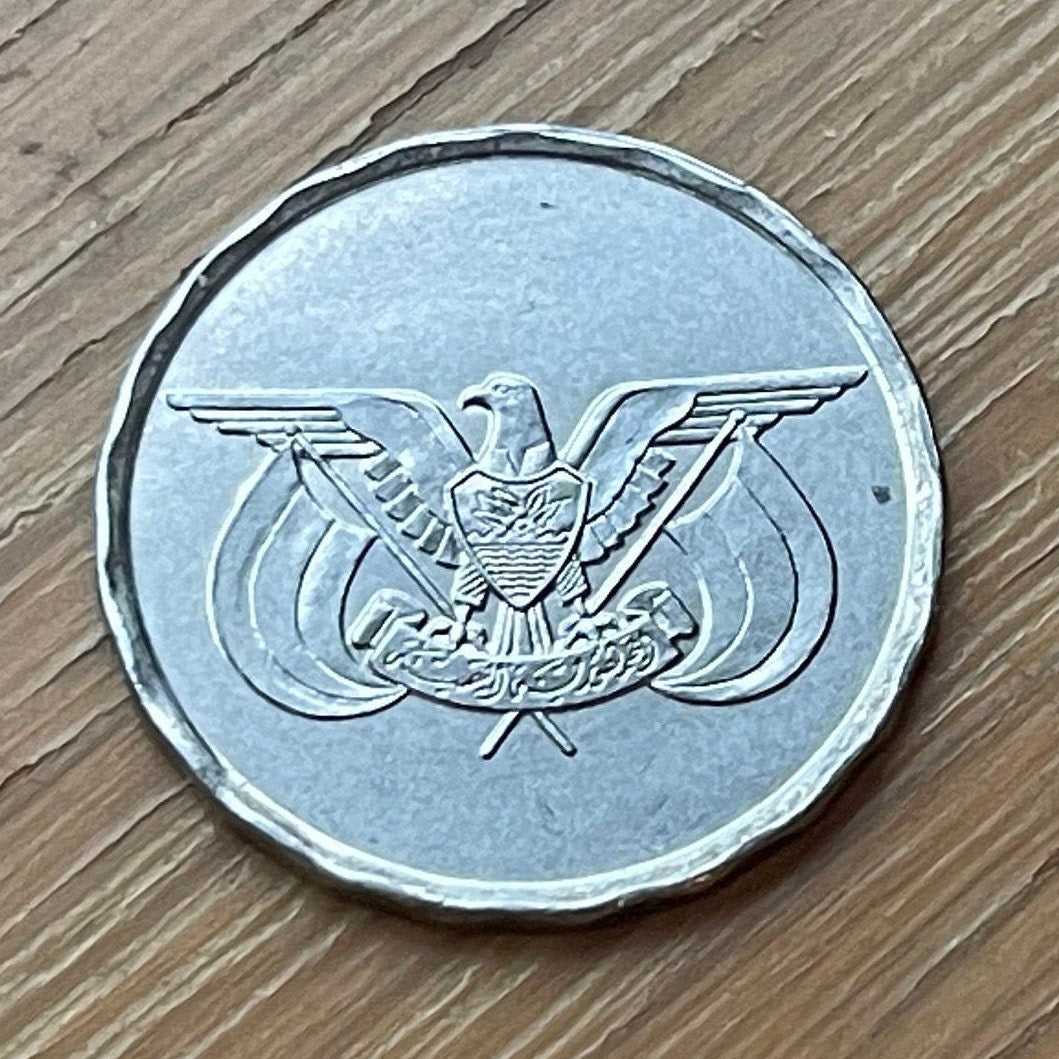
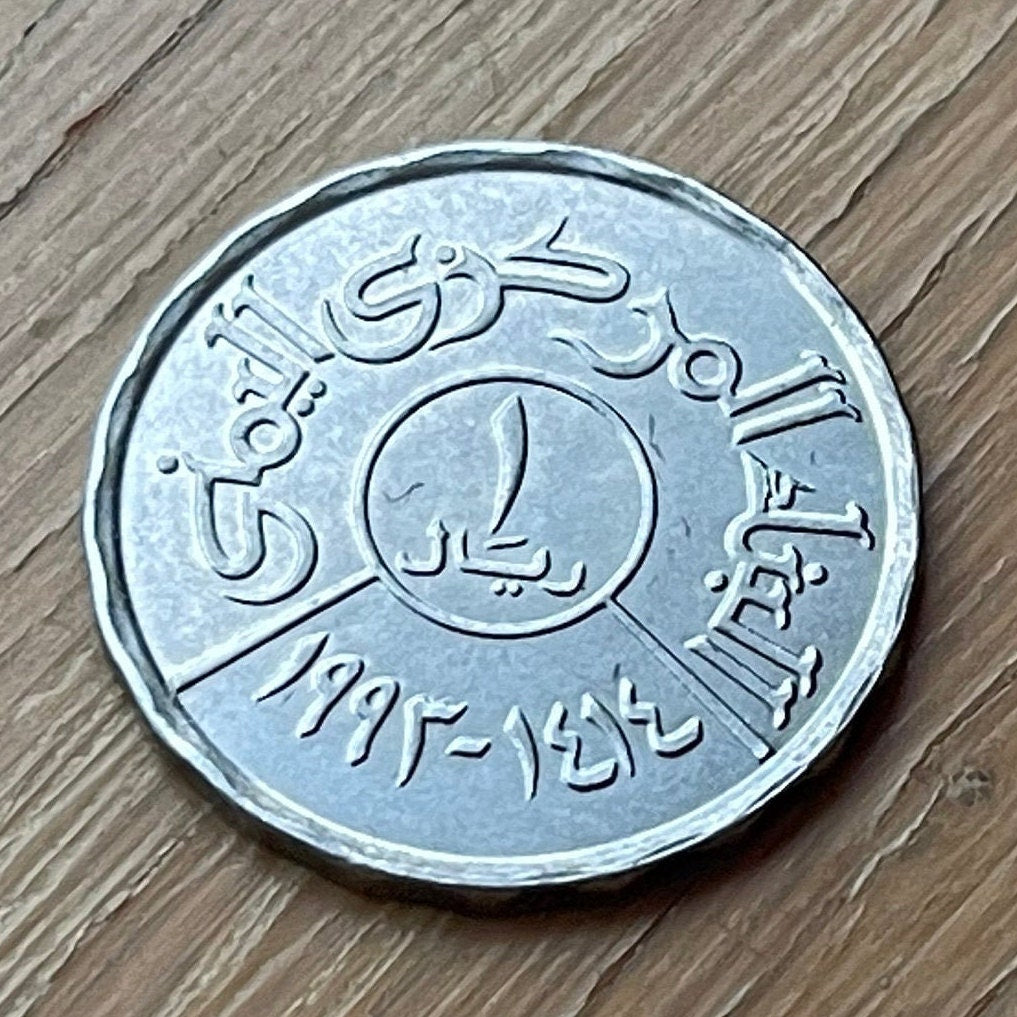
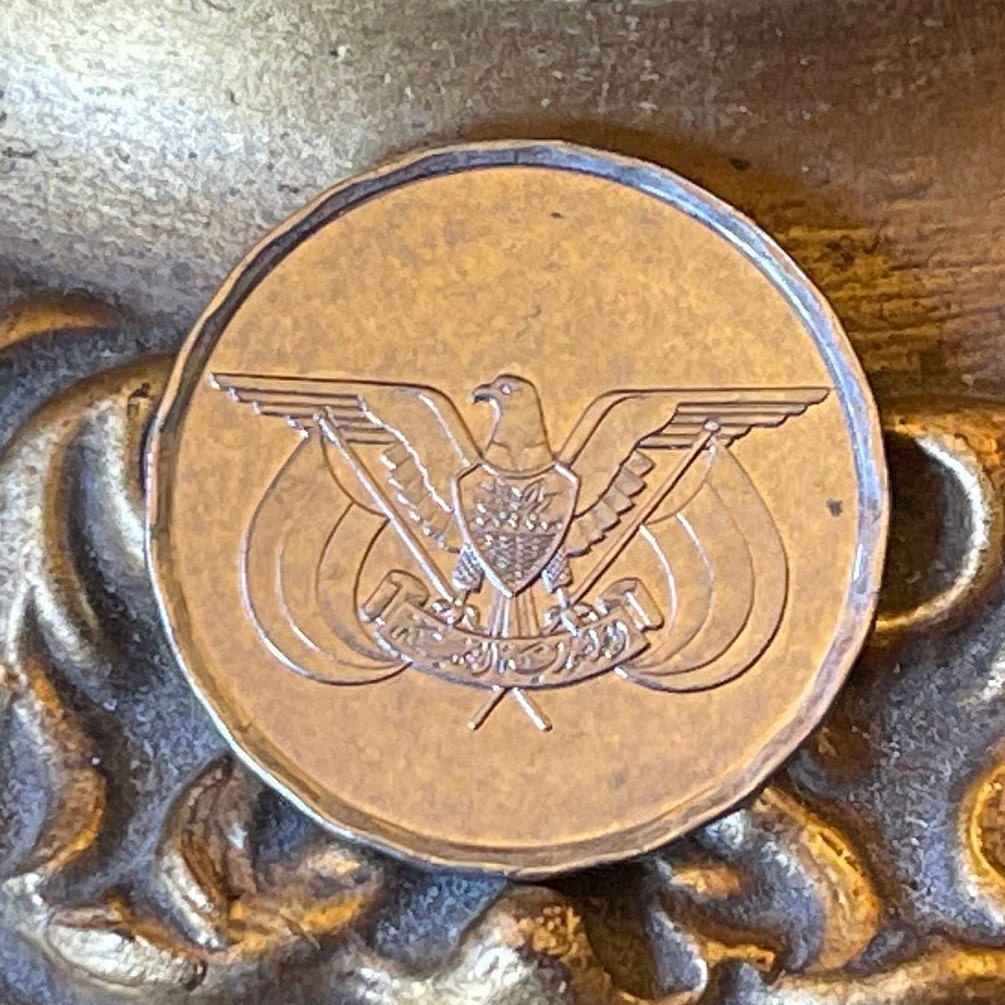
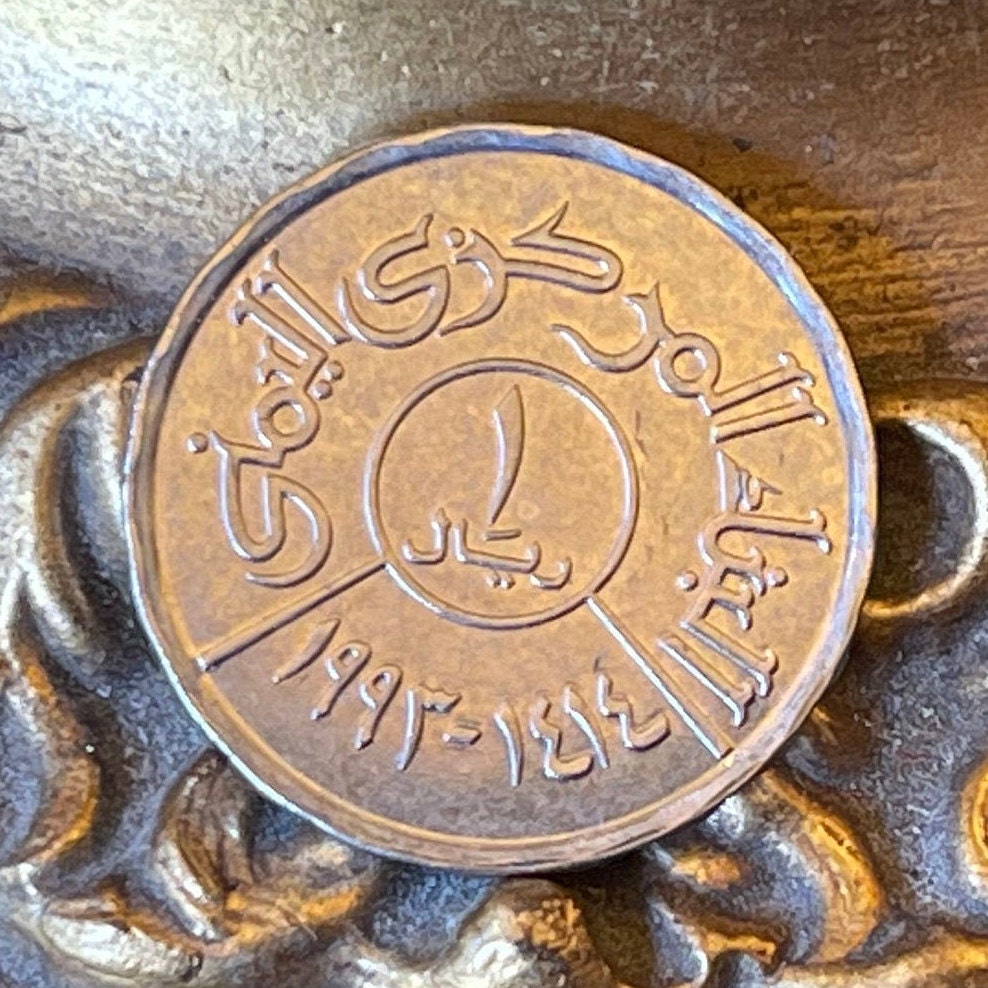
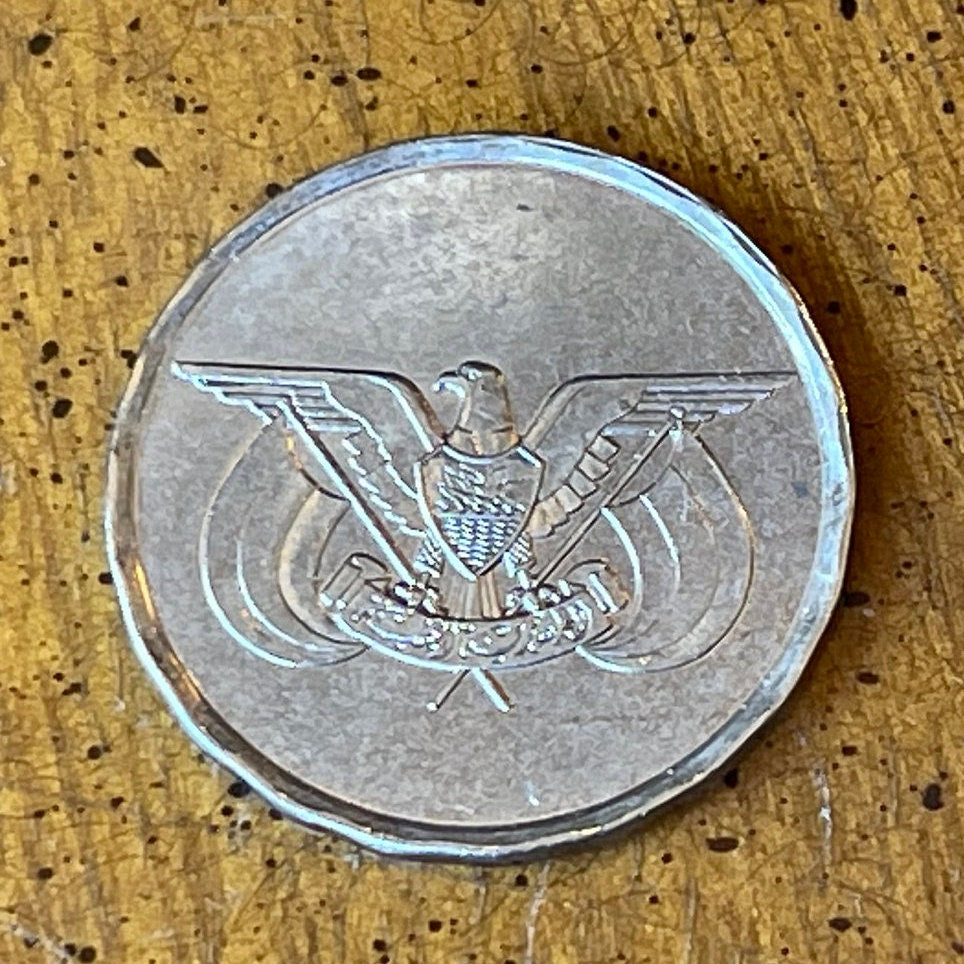
Nice looking eagle to add to the collection.
5 stars review from Shannon
5 stars review from Michael
It is a very nice coin
